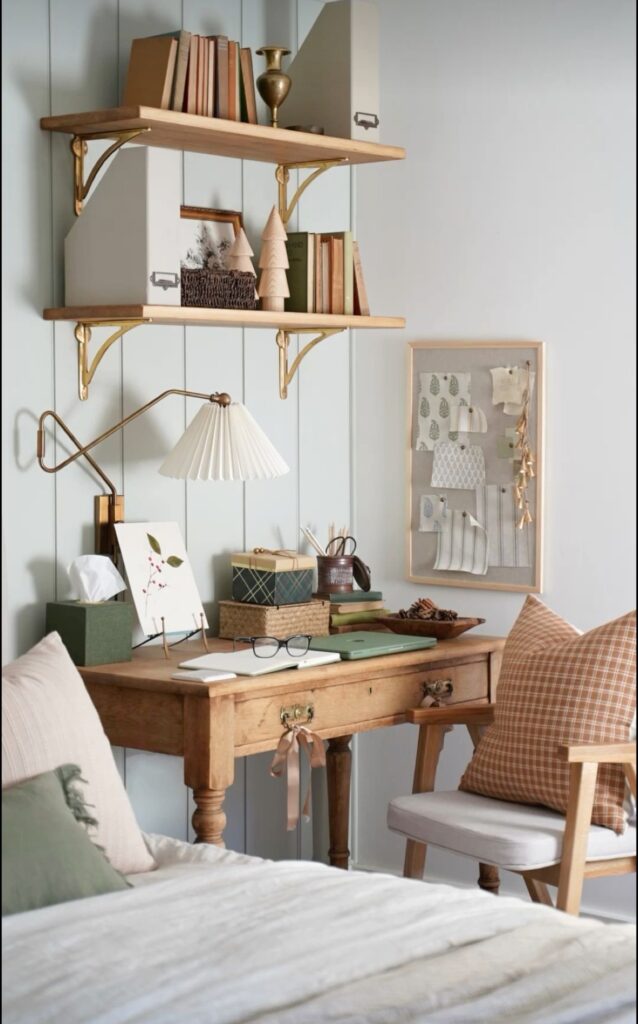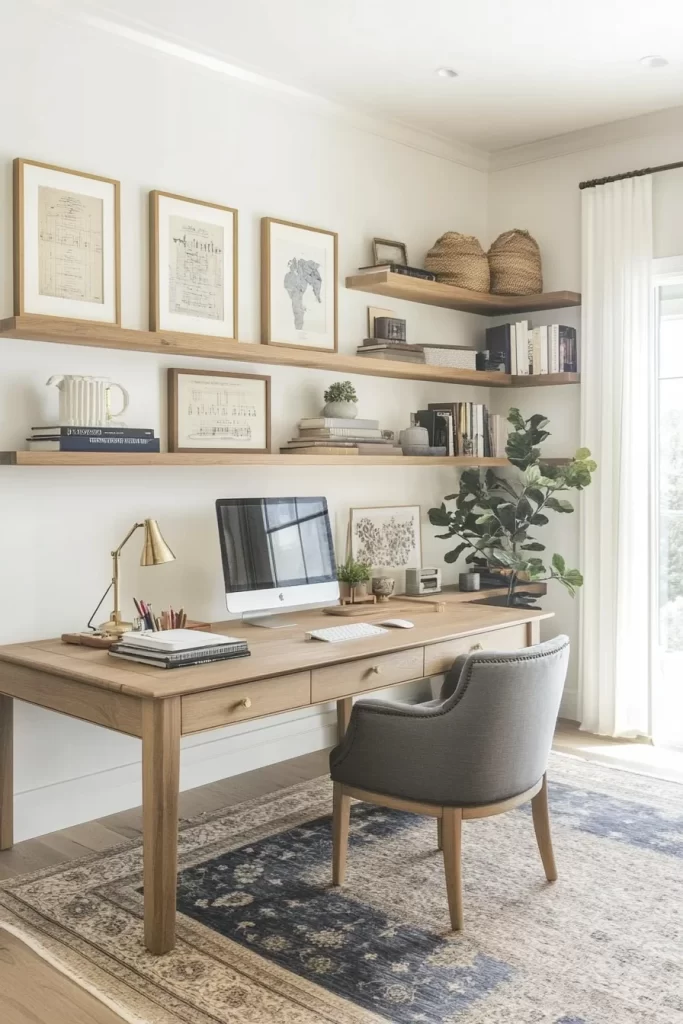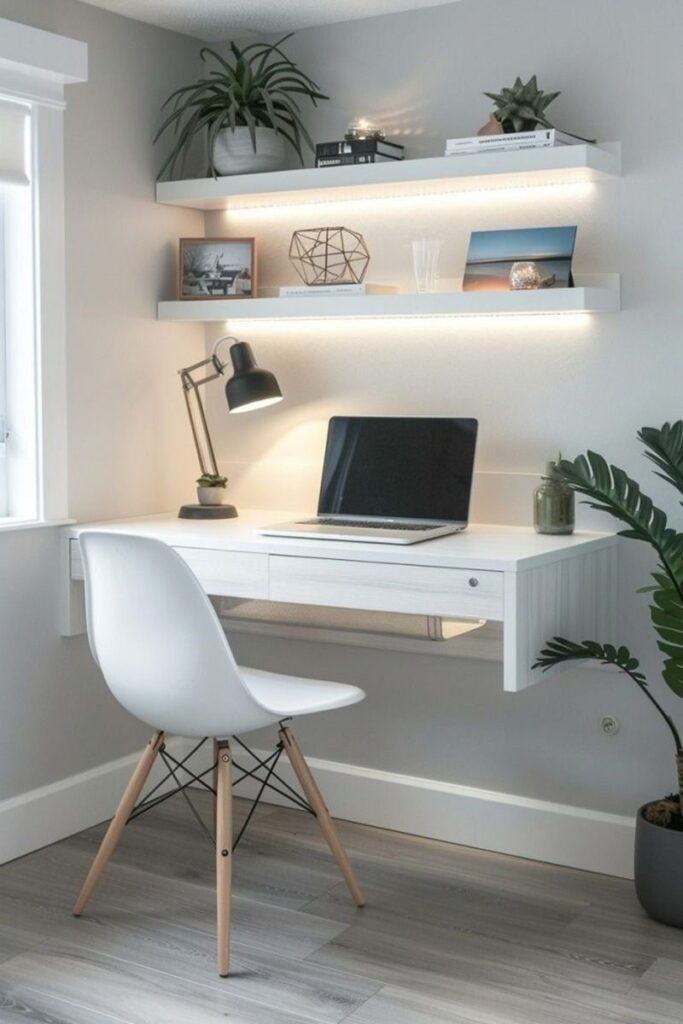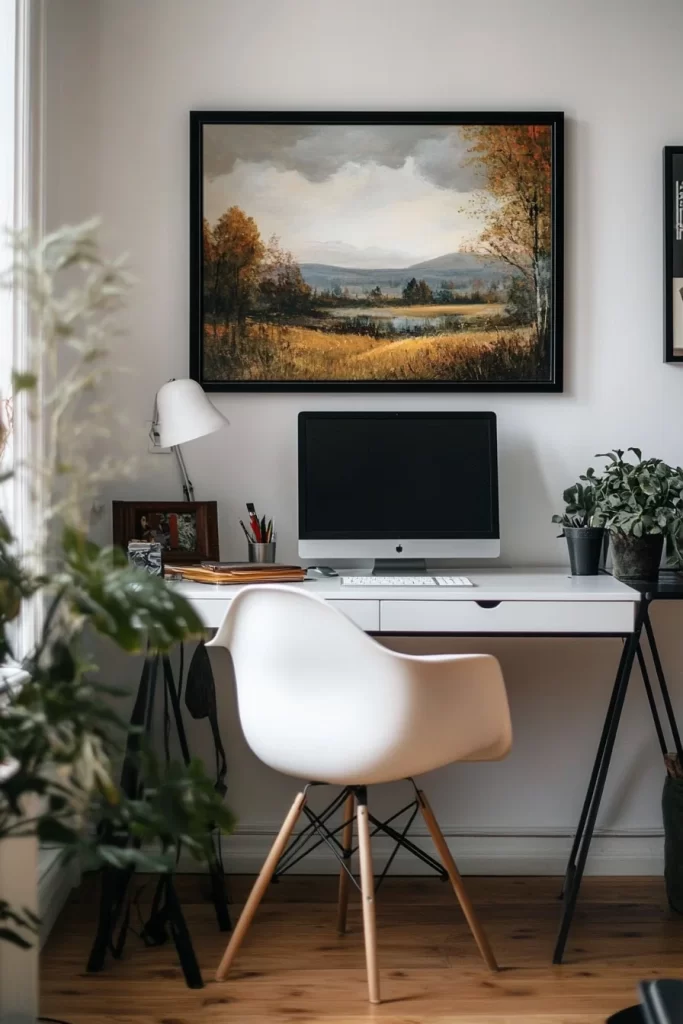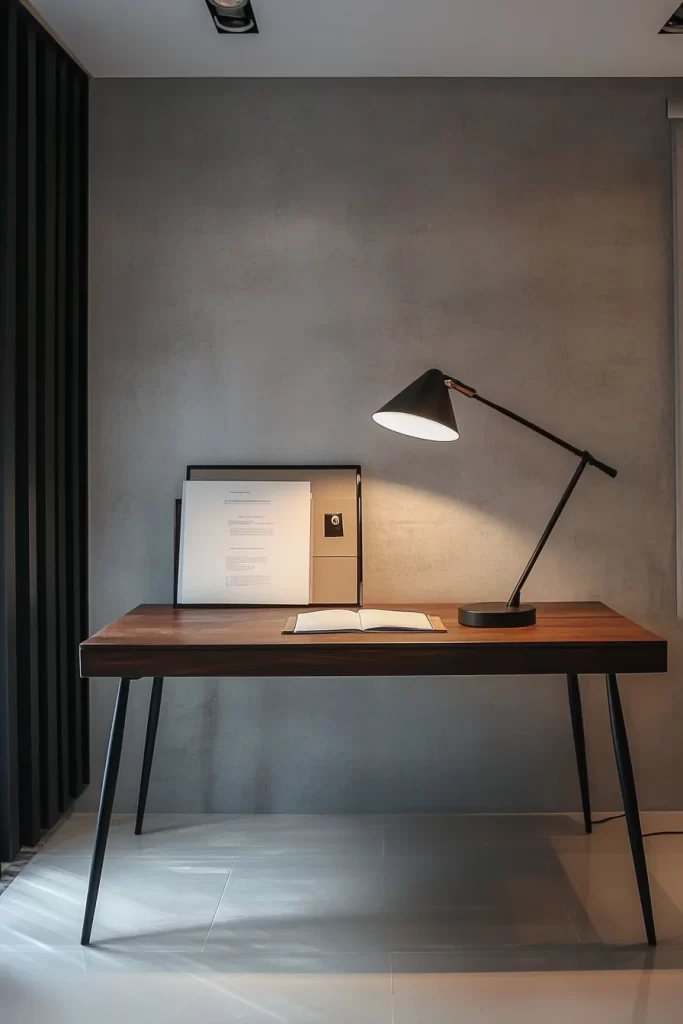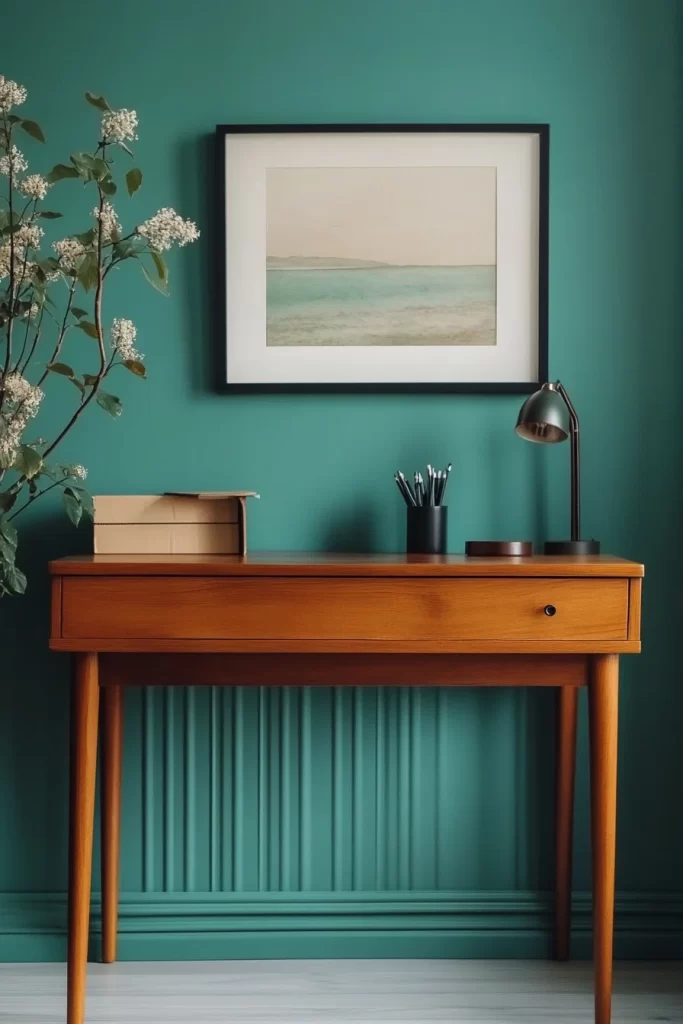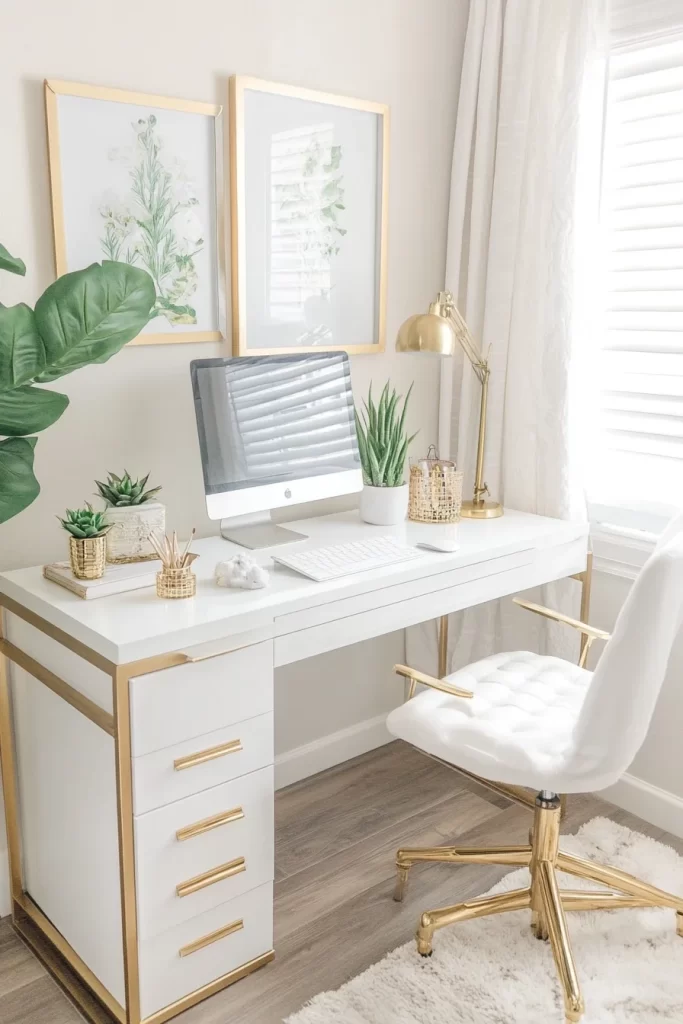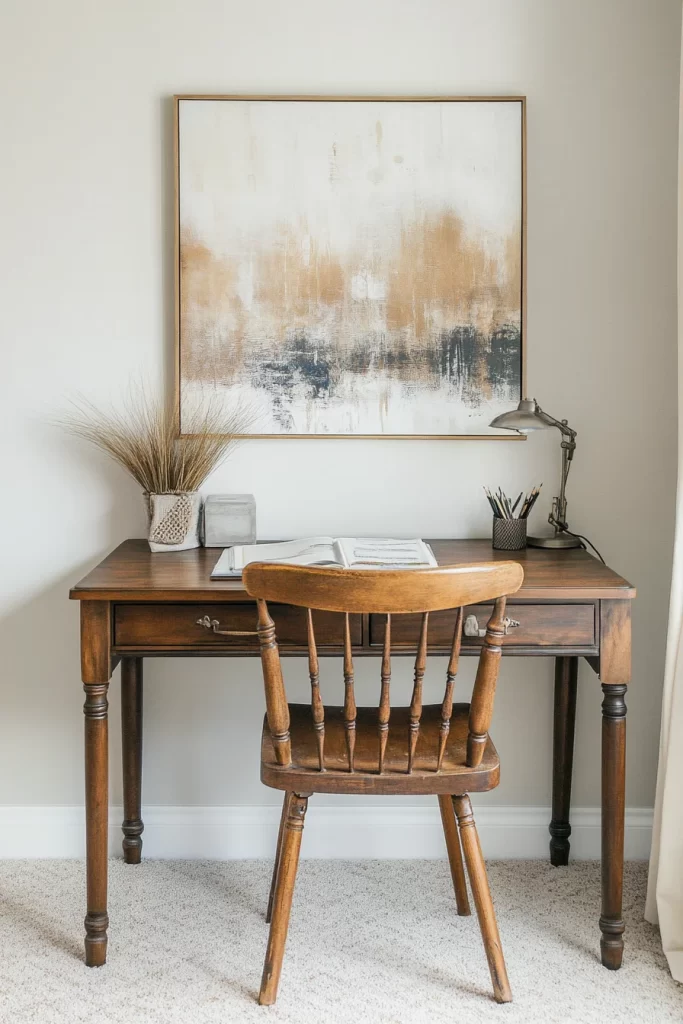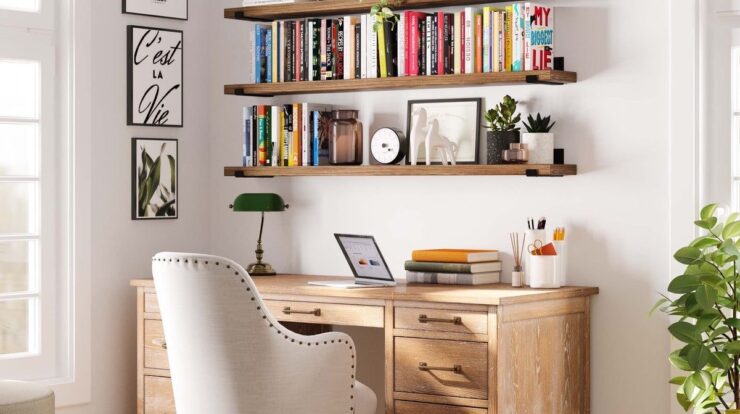
As the home office becomes a staple for many of us, it’s clear that having a dedicated workspace, however small, is crucial for productivity, comfort, and mental well-being. While a separate room may be ideal, even a small desk setup in your bedroom, living room, or dining area can create a mental boundary between work and home life. This isn’t just about aesthetics; it’s about creating a space where you feel motivated, organized, and at ease.
https://youtu.be/JJccLuJCyyU
1. Increases Productivity and Focus
A dedicated workspace minimizes distractions. Unlike working on the couch or in bed, which can invite thoughts of leisure, a defined desk setup conditions your brain to shift into “work mode.” This boundary is vital for concentration and prevents the sluggishness that often comes from working in comfortable spaces that are better suited for relaxation.
Consider a small corner in your bedroom or living room, outfitted with a compact desk and a few essentials. Even a minimal setup sends a powerful signal to your brain that it’s time to focus, aiding productivity and helping you finish tasks faster with fewer distractions.
2. Improves Work-Life Balance
Without a set workspace, it’s easy for work to spill into your personal life. By designating a specific area for work, you can physically and mentally leave work behind when the day ends. This separation is crucial, especially for those who work from home regularly. Establishing an end-of-day routine—such as clearing your desk, turning off your computer, or shutting a notebook—helps mark the shift from work time to personal time, reducing stress and enhancing mental health.
3. Enhances Ergonomics and Physical Health
A structured workspace allows for ergonomic adjustments that aren’t possible when working on a couch or bed. With a proper desk setup, you can adjust your chair and screen height, ensuring better posture. Over time, this reduces the risk of back pain, eye strain, and other discomforts associated with prolonged sitting in awkward positions.
Creating a Functional and Cozy Home Office in Any Space
The beauty of a home workspace is that it can be customized to your style and needs. Here’s how to transform even a small corner into a cozy, functional home office that feels inviting and energizing.
Step 1: Choosing the Right Spot
- Find the Perfect Location: Start by looking for a spot that’s somewhat out of the way, minimizing interruptions. Popular options include a corner of the bedroom, an unused wall in the living room, or a spot near a window in the dining area. You don’t need a full room—just enough space for a small desk.
- Consider Lighting: Natural light has been proven to boost mood and energy, so try placing your workspace near a window. If that’s not feasible, invest in a desk lamp with a daylight bulb to create a warm and bright atmosphere.
Pro Tip: If privacy is limited, consider adding a room divider, a folding screen, or even a tall bookshelf that subtly defines your workspace while adding storage.
Step 2: Define Your Space Visually
Creating a visual boundary around your workspace can help solidify its function, even if it’s just a small section of a larger room.
- Use Rugs to Define the Area: A small rug under your desk adds a cozy feel and marks your work zone. This subtle boundary visually separates your workspace from the rest of the room.
- Add Greenery: Plants are excellent decor and offer health benefits, like purifying the air and boosting mood. Even a small potted plant on your desk or a hanging plant nearby can make a significant difference.
- Incorporate Wall Decor: If wall space allows, consider mounting a couple of shelves to hold decorative items, office supplies, or personal touches like framed quotes. These can make your workspace feel unique and purposeful.
Step 3: Choose Essential Furniture for Comfort and Efficiency
- Select the Right Desk: In a small space, go for a compact, multipurpose desk. Foldable desks or ones with built-in shelves are ideal for tight spots and keep your essentials within reach without cluttering the area.
- Invest in a Comfortable Chair: A good chair is key to maintaining posture, especially if you spend long hours sitting. Ergonomic chairs are great but can be bulky; opt for a compact version with lumbar support if space is tight.
- Organizational Accessories: Keeping your desk tidy can do wonders for focus. Small organizers for pens, paper clips, and notepads reduce clutter and make your workspace feel more functional. Cable organizers can also help keep cords neat, freeing up valuable desk space.
Using Colors to Boost Productivity and Mood
Color plays a powerful role in setting the tone for any space, and the same goes for your workspace. Here are some practical ways to bring colors into your setup that can influence your mood and motivation.
- Add Pops of Color: Colors like green and blue are known for promoting calmness and focus, making them ideal for a workspace. You don’t have to paint walls to use these colors; instead, incorporate them through accessories like desk organizers, a small plant pot, or wall art.
- Choose Personal Touches: Personal items, like family photos or souvenirs, make the workspace feel inviting and yours. Arrange a few items that bring you joy without overcrowding the desk. This setup keeps your desk functional yet personalized.
Enhance Ambiance with Lighting and Scents
Proper lighting and scents can make your workspace feel cozy, energizing, or soothing, depending on your preference. Here’s how to make your setup feel welcoming:
Lighting
- Opt for Desk Lamps: While overhead lighting can be harsh, a soft desk lamp creates a warm and inviting atmosphere. Adjustable lamps with dimming options allow you to control the intensity, keeping eye strain at bay.
- Layer Your Light: If you work into the evening, consider layering your light sources. A combination of a desk lamp, nearby floor lamp, and ambient fairy lights can create a soothing glow that keeps you energized without feeling harsh.
Scents
- Essential Oil Diffusers: Scents like lavender, eucalyptus, and citrus can help with focus and relaxation. Place a small diffuser on your desk or nearby, choosing essential oils that match your mood.
- Scented Candles: For those who enjoy candles, a lightly scented candle can add warmth and coziness to your workspace. Just be mindful of flame safety, especially in small spaces.
Break-Friendly Elements to Stay Fresh and Focused
Taking breaks is essential for productivity and mental clarity. Here are a few ways to design your workspace with mini-breaks in mind:
- Stretch Space: Have a yoga mat nearby or designate a small space for quick stretches. This can help release tension and improve circulation, especially if you’re sitting for extended periods.
- Hydration and Snacks: Keep a water bottle or a small, healthy snack station within reach. Staying hydrated and having a quick snack on hand can keep energy levels up, preventing those afternoon slumps that hurt focus.
Tips for Maintaining Motivation and a Clutter-Free Space
When working from home, staying motivated can be challenging. Here are some tips to keep you on track and prevent your workspace from becoming cluttered over time.
Setting Boundaries with Family or Roommates
- Communicate with family members or roommates about your work schedule. This boundary helps minimize interruptions and sets expectations for when you’re “in the zone.”
- Consider using headphones if background noise is an issue. Playing soft, focus-friendly music or white noise can also help you stay focused.
Use Visual Reminders
- Vision Board or Sticky Notes: Place a small vision board or use sticky notes with motivating quotes near your workspace. This serves as a constant reminder of your goals and can lift your mood during challenging days.
- Calendar and To-Do Lists: Keep a physical calendar or a notepad to list daily tasks. This is not only helpful for time management but also gives a sense of accomplishment as you check items off.
Quick Ways to Make Your Workspace Cozy and Inviting
Sometimes, a few simple touches can make your workspace feel more inviting and comfortable. Here are some quick and easy additions to consider:
- Soft Textures: A cozy throw blanket draped over your chair or a soft cushion adds warmth to the area and can be used for comfort during work breaks.
- Ambient Sound: Consider playing light background music or white noise. Nature sounds, such as rain or ocean waves, can be especially calming and help mask household noises.
- Art and Personalization: Small pieces of art or photos bring personality to the workspace. Choose pieces that uplift you or reflect your interests—perhaps a painting, a framed quote, or a photo of a cherished memory.
Conclusion: Creating a Workspace That Works for You
A designated workspace, no matter how small, is more than just a place to work—it’s a space to feel motivated, focused, and inspired. With a bit of creativity, even a corner of a room can become a lively, cozy workstation that enhances your productivity and mood.
By investing in comfortable, ergonomic furniture, adding personal touches, and using colors and scents thoughtfully, you can turn any nook into a workspace that balances function with a sense of home. And remember, it’s about finding a setup that fits your lifestyle—one that motivates you each day while respecting your personal space and comfort.

